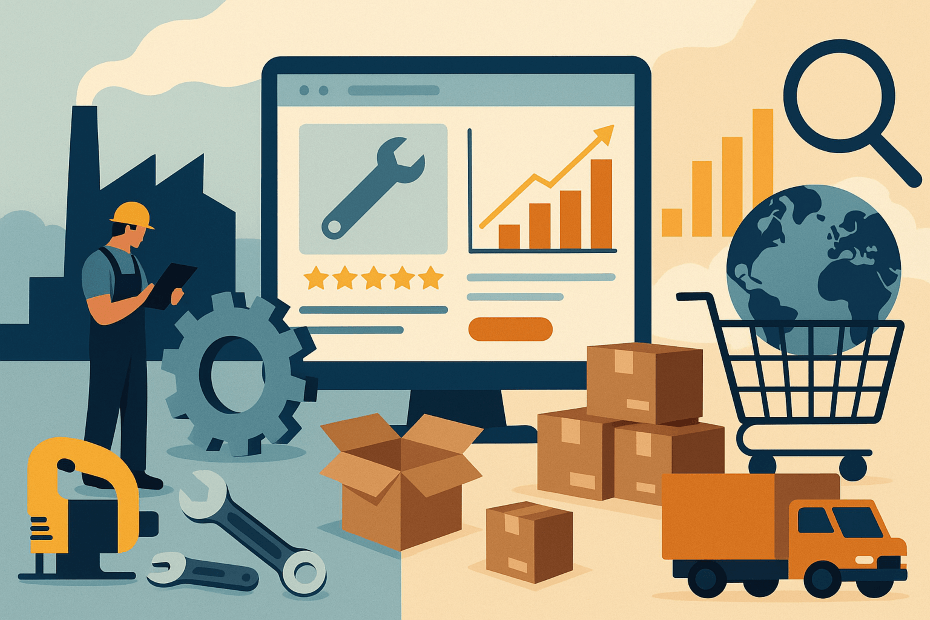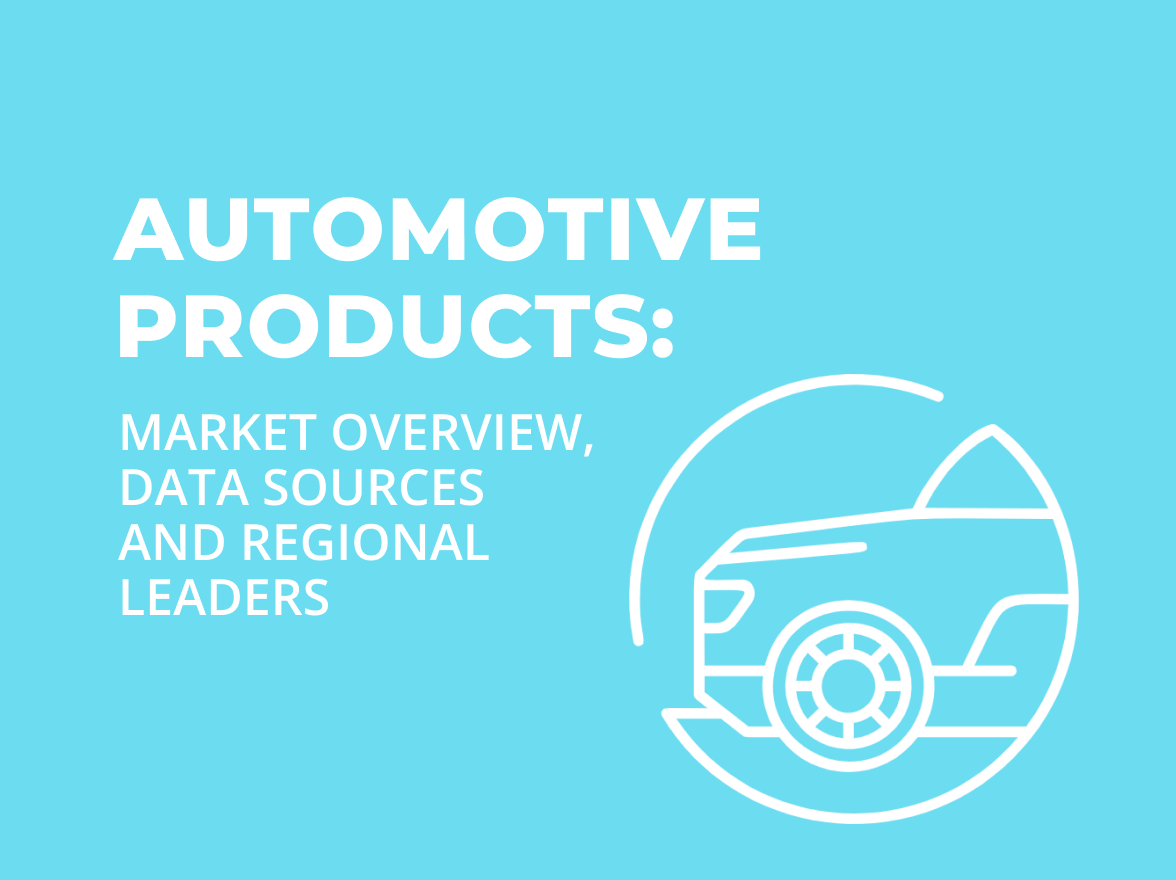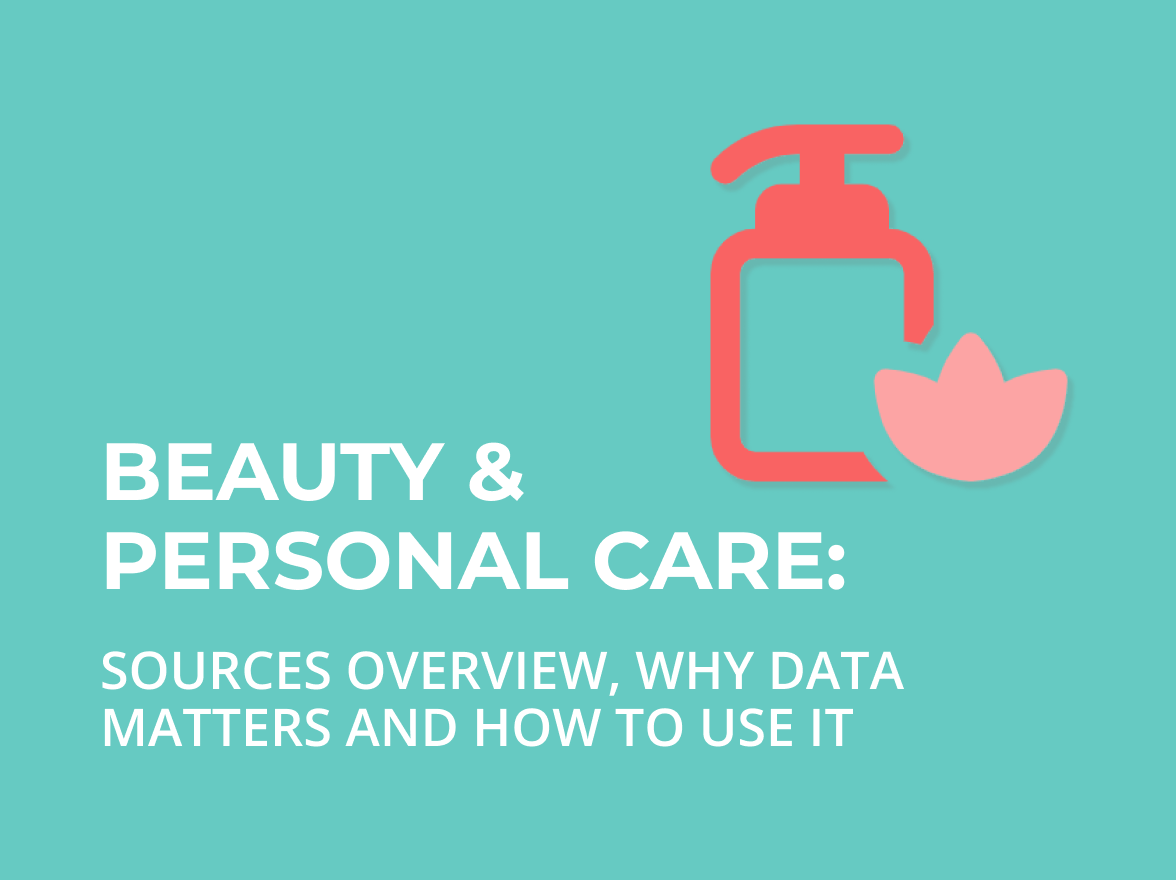Automotive products: Market overview, data sources, and regional leaders
The automotive products market, spanning car and motorcycle parts, accessories, consumables, tools, and tires, is vast, resilient, and increasingly digital-first.
When we talk about ecommerce, most minds immediately picture flashy gadgets, fashion, or home décor. But behind the scenes lies a titan of a category – Industrial & Scientific – quietly powering manufacturing, healthcare, research labs, infrastructure, and even backyard workshops. This is a world where abrasives, cutting tools, filters, plumbing fittings, scientific instruments, adhesives, power tools, medical supplies, test equipment, and hundreds more product types converge. These items are the invisible enablers of everyday operations – for businesses, labs, and individuals alike.
Yet while the market is vast, it’s also fractured. With sellers spread across global platforms, specialized distributors, and local niche players, the signal-to-noise ratio is low. In this environment, structured datasets become the compass by which savvy organizations chart their course.
To understand the urgency, let’s step back and look at the macro picture.
Industrial distribution is massive – and digitizing rapidly
These numbers indicate two things: the industrial & scientific supply chain market is enormous, and the digital share of that market is accelerating.
Even niche product categories within industrial & scientific are experiencing sustained demand and growth, propelled by automation, electrification, and smart systems.
Industrial companies have traditionally leaned on in-person relationships and deep distributor networks. But the trend is shifting. McKinsey argues that leaders are now “putting ecommerce at the heart of their growth strategy.” Similarly, industrial firms are embracing digital tools, predictive analytics, API-powered replenishment, and automation to stay competitive.
In short: the future of industrial & scientific commerce is digital, and data is the fuel.
Imagine being a procurement manager at a mid-size manufacturer. You need a certain hydraulic valve, and you know of several distributors – some local, some global. Prices vary. Some vendors are out of stock. Reviews differ. Shipping times change. You make assumptions, but they may be rooted in guesswork rather than reliable signals.
Or picture a tooling startup launching a new line of precision cutters. You want to benchmark similar tools: how are your competitors pricing them? What features are customers praising or criticizing? Which SKUs are selling fastest? You might sample a few marketplaces manually, but that’s time-consuming and partial.
Now, imagine instead that you have a feed – a clean, structured, up-to-date dataset – that tracks thousands of SKUs across dozens of platforms, with attributes like price, availability, ratings, seller identity, geographic variation, and more. That’s the difference between wandering in the dark and navigating with radar.

Here are concrete scenarios, tied to real companies, where Industrial & Scientific datasets deliver strategic value:
Stanley Black & Decker / DeWalt
Home Depot
MSC Industrial Supply (MSC Direct)
Grainger
Fisher Scientific / Thermo Fisher / Lab distributors
Henry Schein / medical & dental supply firms
Industrial B2B Platforms & Marketplaces
Across all these, the datasets act as a single source of truth in a fragmented ecosystem.
At SSA Group, we don’t just deliver raw data — we deliver meaningful, AI/BI-ready datasets:
You can see a live sample here: Amazon Industrial & Scientific dataset.
Imagine combining that with your internal sales data, your logistics KPIs, and your R&D pipeline. The insights become powerful: “What if we dropped price by 5 % in region X? Which SKUs are underperforming? Which emerging tools are heating up globally?”
The Industrial & Scientific sector is no backwater – it’s a complex, dynamic field with massive scale and accelerating digital growth. As ecommerce becomes a core channel for even traditionally analog industrial firms, intelligence powered by structured datasets becomes not just an advantage – a necessity.
SSA Datasets are not just data. They’re your strategic enablers.
Ready to bring clarity to complexity and gain an edge in this marketplace? Contact us now to explore how SSA Datasets can transform your competitive strategy.

The automotive products market, spanning car and motorcycle parts, accessories, consumables, tools, and tires, is vast, resilient, and increasingly digital-first.

The Beauty & Personal Care market is rapidly evolving — fragmented across private-label drugstores, prestige specialists, and fast-scaling e-commerce platforms.
you're currently offline